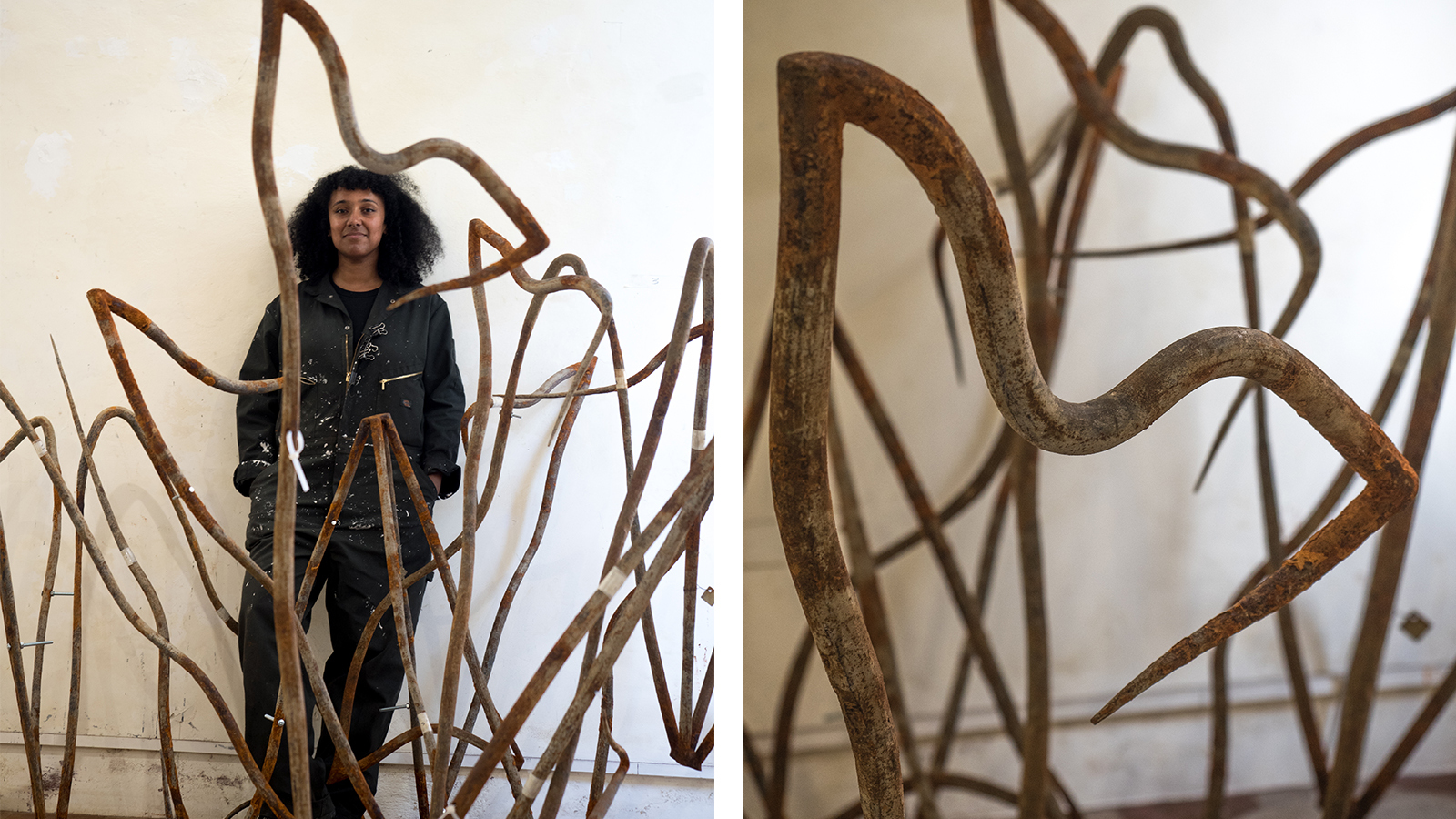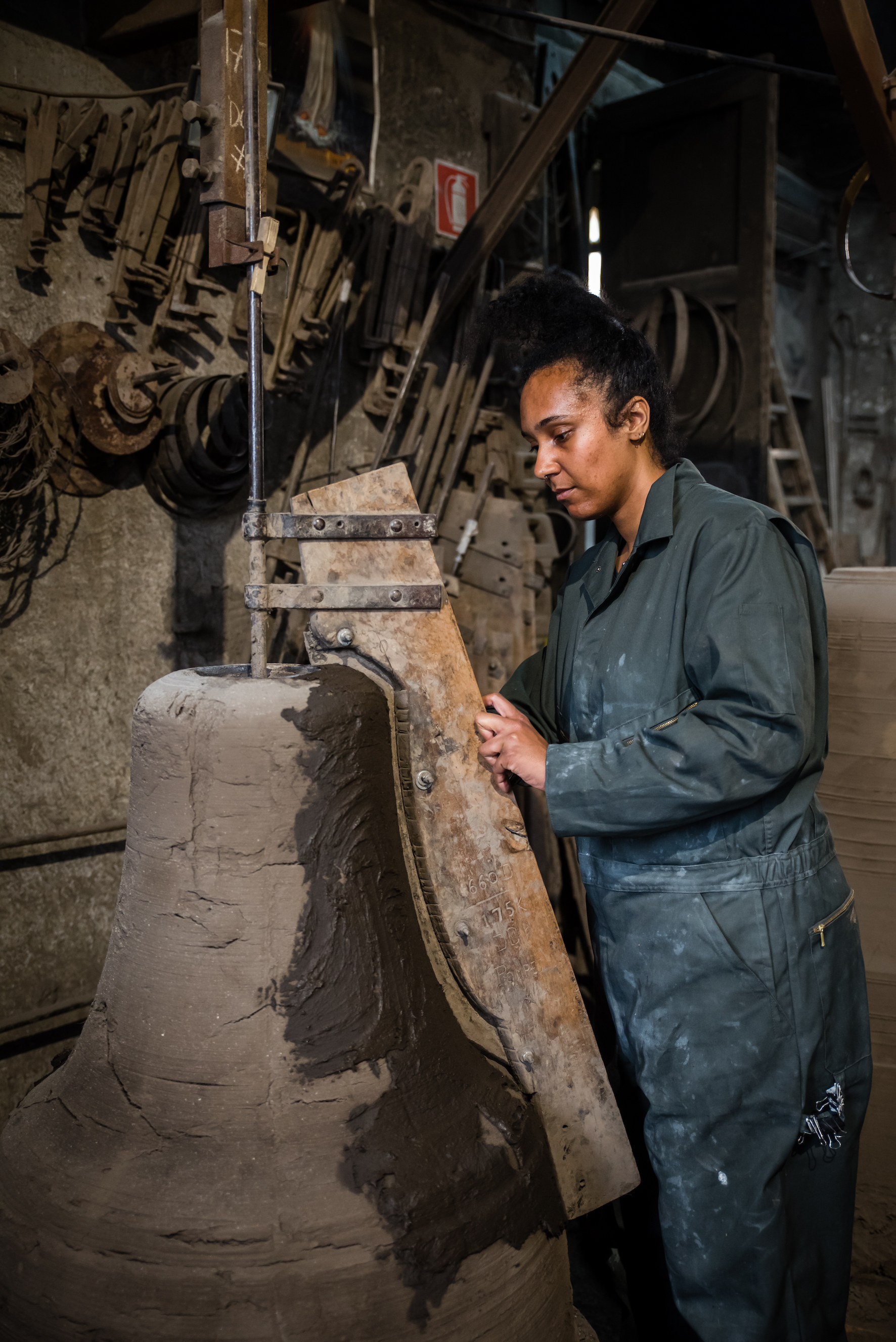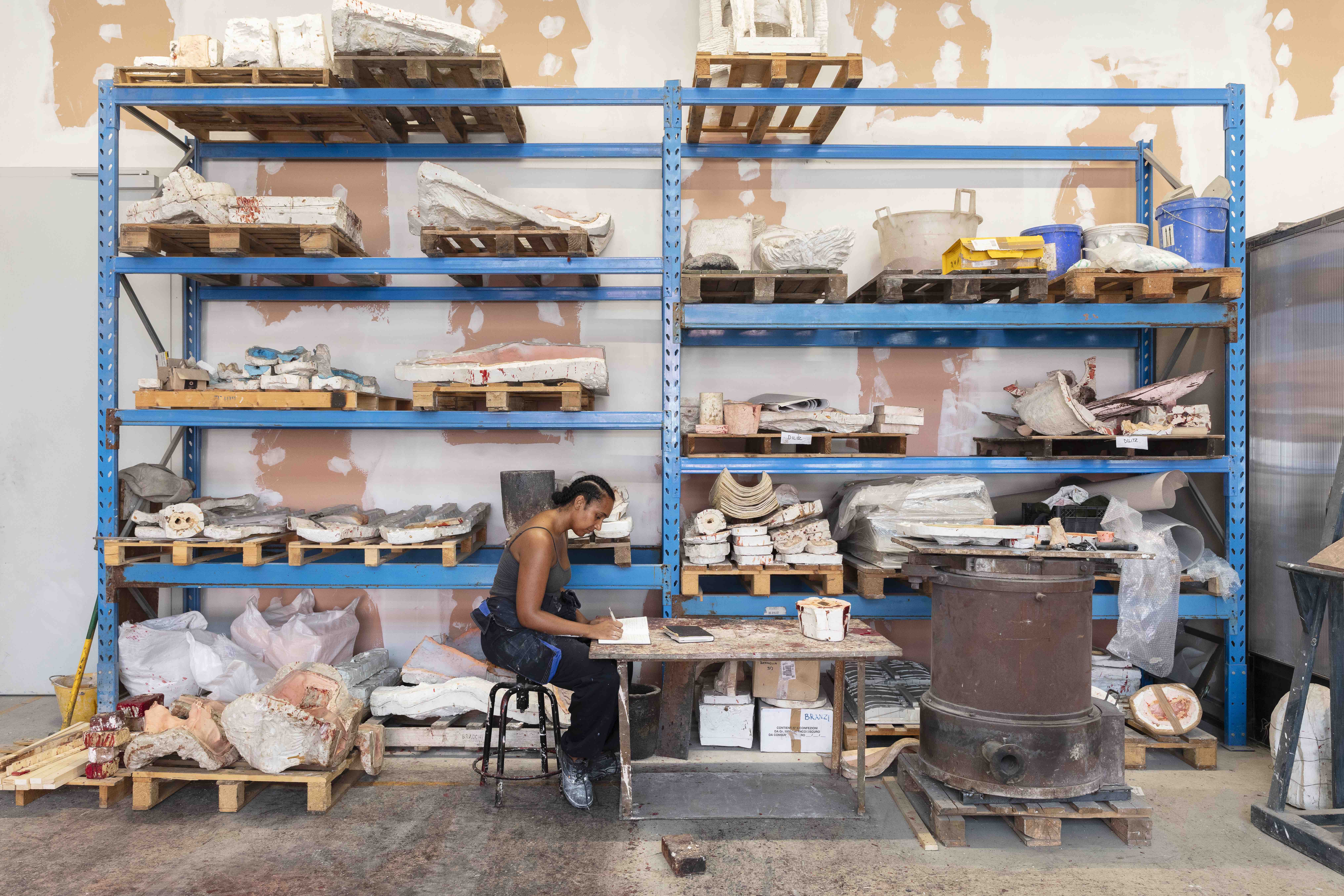
The Max Mara Art Prize for Women, although only in its ninth edition, already has a reputation for playing a key role in the careers of women artists with unique practices. The award includes a residency in Italy, resulting in an exhibition at the Whitechapel in London. Announced last year, the recipient of the 2022-2024 Max Mara Art Prize for Women, Dominque White, works with sculpture and installation through methods of deep research, and adds her name to the impressive list of previous winners, including Laure Prouvost, Helen Cammock and Emma Talbot.
White’s Whitechapel exhibition, ‘Deadweight’, which opens 2 July 2024, is a result of her Italian residency, completed predominantly in Todi, near Rome, and Genoa, the birthplace of Christopher Columbus. The show takes its name from the measuring of the weight of ships’ contents, including people and cargo, as a single unit, exploring Afrofuturism, Afro-pessimism and hydrarchy (the practice of gaining power over land using water). White looks at the submarine world as an Afrofuturistic space for emancipation, a world of possibilities both dangerous and filled with the potential of the unexplored.

Wallpaper* visited White’s temporary studio in the quiet town of Todi, while she was working on the sculptures we see in ‘Deadweight’, and spoke to her about her practice and the exhibition, for which she corroded her work by submerging it in the sea.
Dominique White on ‘Deadweight’ and her Max Mara Art Prize residency
‘Afrofuturism is a site of impossibility, and I don't have to only think of outer space, I can think of new intangible worlds, I can think about the sea and then I also just get really excited about the accidental discoveries that we find in the sea; these deep sea creatures that are so black naturally, that you can’t even see them on camera. All those little nuggets of information have always excited me much more than animals that we find on land, or the idea of outer space,’ White told us.

The work in ‘Deadweight’ takes inspiration from marine ephemera such as anchors, sails and sheets (rope) and combines it with the inherent danger of water and hydrarchy. There are unwieldy, twisted forms in metal, linen stained with carbon, and flotsam and jetsam. White is also interested in volatile materials, and the works, although heavy and static, are also in flux, some even being weighted into shape but never too permanently.
‘I feel like I am almost an anti-sculptor; I hate the idea of [the works] being protected – I want the viewer to feel like they can’t occupy the same space, like you have to tiptoe around the sleeping beast, but you want to see it, you want to get closer,’ said White. ‘I think that [feeling] also relates to this idea of being a difficult artist, not conforming to these very strict, very archaic ideas of who can be an artist or what art even looks like, or how art is supposed to be received.’

A passionate reader, White emphasises the role of research and reading in the making of her works. For ‘Deadweight’, her research led her, for example, to the modern legend of the salvaging of Roman Emperor Caligula’s party boats. The huge, ornate floating structures, decorated with marble floors and pillars, lay for centuries at the bottom of Italy’s Lake Nemi, before it was drained at the order of Mussolini in 1929, and the boats subsequently recovered, only to be lost to fire before the end of the Second World War.
White also travelled to Agnone, Palermo, Genoa, and Milan, instigating conversations with academics and members of the maritime community.
She even referenced the transcendental qualities of Alice Coltrane’s psychedelic jazz music. ‘I think it has that way of storytelling, that for me has always led either to the sea or to something completely intangible.’

Facilitated by the Max Mara Art Prize for Women and partner institution Collezione Maramotti, in Reggio Emilia, White was able to spend time conceptualising and realising the exhibition in collaboration with local fabricators, who helped make the larger sculptures.
On entering her studio in Todi during her residency, works in progress included twisted metal structures that had been exposed to salt water amid an ongoing process of alternation – acquiring and shedding layers of rust.
‘I call myself a mediator because the materials are so unruly,’ she said. ‘I have videos on my phone of my assistant straddling and holding onto a work so it didn’t crush me. They are almost like beasts; even with other works that are suspended, it’s always about finding the balance, so it doesn't crush itself.’

‘Deadweight’ promises to offer a commentary on how we see the past, how we record the past and how the vast unexplored expanse of water on our planet impacts our psyche.
‘It’s where your imagination can go completely free, up off the rails. You’re not limited by rules or boundaries. You can dream whatever you like,’ said White.
‘Deadweight’ runs at the Whitechapel Gallery, London, from 2 July until 15 September 2024, whitechapelgallery.org and then at and Collezione Maramotti, Italy, 27 October 2024 – 16 February 2025, collezionemaramotti.org
For more shows, see our guide to this month’s London art exhibitions.







